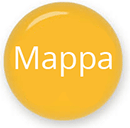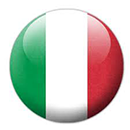|
Piazzetta Sant'Andrea |



|
Church of Sant'Andrea: This church, believed to have been the city's ancient cathedral, is thought to date back to the period of Longobard domination (7th-8th cents.). It took on its present-day appearance in the mid-12th century. The façade, with two-coloured marble ornamentation, is divided by five arches with columns and concave rhomboid motifs, the work of Gruamonte, and has three portals decorated with zoomorphic figures; on the architrave of the central portal is a Journey of the Magi to Herod and an Adoration of the Magi by Gruamonte and his brother Adeodato (1166). The interior, which has a nave and two aisles with columns and a semi-circular apse, is embellished with important works of art from the 13th to 17th centuries. In the apse semi-dome is a fresco of the Blessing of God the Father Supported by Four Angels by Bernardino del Signoraccio (1506); in the nave is the great marble pulpit (1298-1301), a masterpiece by Giovanni Pisano consisting of seven porphyry columns, five panels decorated with scenes from the New Testament 49 and numerous other figures of Prophets, Sybils, Apostles and Angels around the entire structure; Pisano also created the two wooden Crucifixes on the walls of the two aisles. |
|
Palazzo Fabroni: Earliest records of this building date back to the middle of the 14th century when it was a tower-house owned by the Dondori family. Bought in 1620 by the Fabroni, whose crest adorns the façade, it was subsequently enlarged, a process that incorporated the old adjoining buildings. In 1861 the building was bought by the city authorities. It was put to a range of different uses, variously remodelled and given a new interior layout. It was first used by the Sub-Prefecture, then from 1928 to 1945 was home to the local Fascist Party Federation, after which it served as a state-run secondary school. A lengthy renovation scheme completed in 1990 reversed the 19th- and early 20th-century modifications which had altered the architectural lines of the building, and revealed elements of the earlier 14th-century tower-house, which can be seen in the large hall on the piano nobile. 50 Palazzo Fabroni Arti Visive Contemporanee houses a major contemporary art collection that holds various temporary exhibitions and runs a range of cultural activities. |


| CNA Pistoia - Impresa+s.coop. Realizzato da SIS Informatica. |